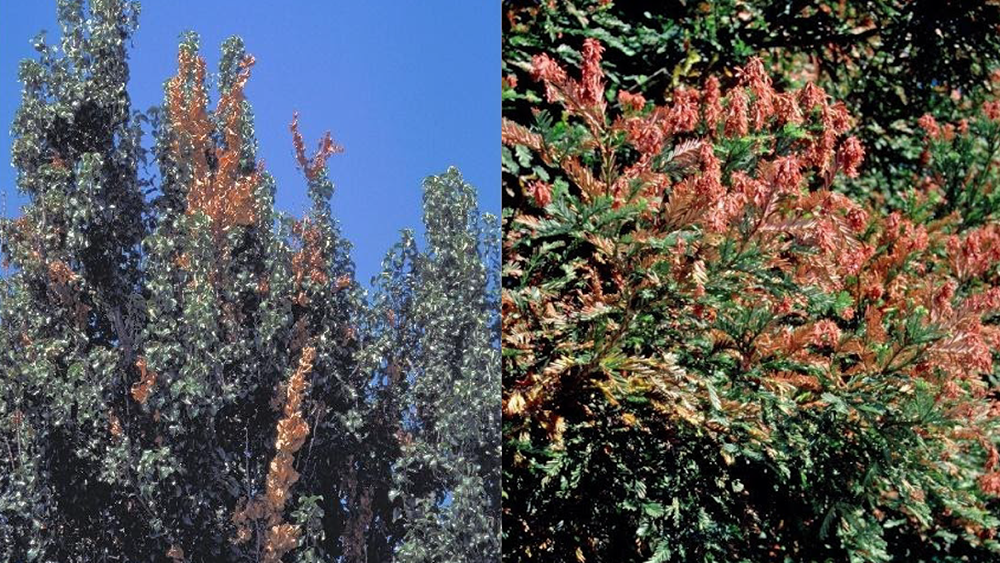How to Solve Plant Problems
No matter how long you’ve been gardening – months, years, or decades, sooner or later, just about every gardener will encounter a plant problem. While many are easily eliminated, there might be occasions when a pest or disease reaches a level where some sort of control measures is warranted.
What causes plant problems?
Plant problems are caused either by living things, such as pests and diseases, or by non-living actions or conditions.
| LIVING CAUSES OF PLANT PROBLEMS (BIOTIC): |
NON-LIVING CAUSES OF PLANT PROBLEMS (ABIOTIC): |
Include:
Invertebrate pests - insects, spiders and mites, snails, and slugs
Vertebrate pests – birds, mammals, and reptiles
Disease – bacteria, fungi, viruses, and phytoplasmas |
Include: mechanical, physical, environmental, or chemical damage or injury. Read more
Examples include:
Drought stress
Freeze injury
Nutrient deficiency
Improper cultural practices, such as overwatering
|
| Problems caused by biotic organisms can spread throughout one plant and/or spread to neighboring plants of the same species. |
Problems caused by abiotic factors can severely damage plants but are not contagious - damage does not spread from plant to plant over time. |

Fireblight (left photo) is a biotic disease, while sunburn damage to the redwood tree (right photo) is abiotic. Credit: UC ANR
Additional differences between biotic and abiotic factors and how they affect plants:
| BIOTIC FACTORS |
ABIOTIC FACTORS |
| Diseases progress over time; they start small and increase in size or severity. |
Damage often occurs suddenly, such as phytotoxicity (plant injury) from a chemical or weather damage. |
| Gradual change between damaged and nondamaged plants. |
Sharp margin of damage between affected and unaffected plants. |
| Slight gradient of increasing severity at the margin of diseased areas is present. |
Damage often follows a uniform or repeated pattern on an individual plant or throughout a planting, like damage on a single side of a plant. |
| Specific damage: Damage occurs to one plant species or cultivar, but rarely to large areas of a mixed planting. |
Non-specific damage: Damage occurs to not just one plant species but to multiple plant species, including weeds. |
Adjacent areas are unaffected.
|
|
Something to bear in mind:
When looking for the cause of plant problems, there can be more than one factor affecting a plant’s health. Plant diseases and insects often attack plants that are stressed by an abiotic factor like drought.


